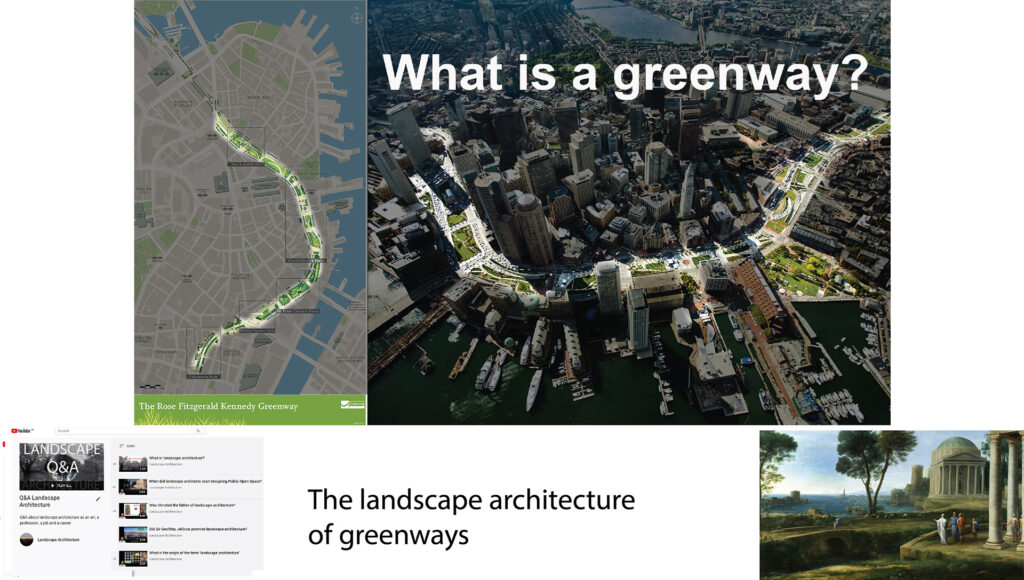What is a ‘greenway’? Q&A

Question 15 What is a Greenway?
Short answer: a greenway can be defined as a route that is good from an environmental point of view. Their history reaches back to the ancient world and the idea was given its present character by Frederick Law Olmsted’s wonderful Emerald Necklace in Boston.
Longer answer: Greenways are an ancient idea with great future potential. But they shouldn’t be designed as disparate projects. Nor should roads, or railways, or phone lines. All of them need to be designed as networks and, unlike the other examples, it is necessary to plan greenways as multi-objective networks. Unless greenway segments are connected you don’t have a greenway network – and get less than half the potential benefit of each segment.
In our leisure-time, we travel for pleasure. As Robert Louis Stevenson wrote: “Little do ye know your own blessedness; for to travel hopefully is a better thing than to arrive, and the true success is to labour.” In the same essay, on El Dorado, Stevenson wrote, of life, that ‘It is not like the works of Carlyle, which can be read to an end. Even in a corner of it, in a private park, or in the neighbourhood of a single hamlet, the weather and the seasons keep so deftly changing that although we walk there for a lifetime there will be always something new to startle and delight us.’
As well as making green ways for walkers, we need to plan them for runners and riders – on bikes, horses and scooters. And cities need green ways for commuters, for getting to shops, to school – and to everywhere else.So here’s my 2017 video about the history of greenways. It begins with a point about society and goes on to review the history of greenways.
Who should plan and design greenways and greenway networks?
Landscape architects have most of the necessary skills for making routes which follow desire lines, which have appropriate surfacing, which deliver a good user experience and which are sensitively related to the urban and rural contexts in which green ways needed.
